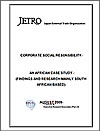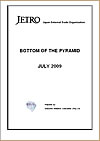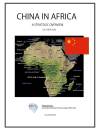 Ghana Rubber Estates Limited (GREL)
Ghana Rubber Estates Limited (GREL)
All data are collected in the Fiscal Year of 2008-2009.
Company Profile and History
GREL started as a small private plantation established by R. T. Briscoe in 1957 at Dixcove with a plantation size of 923 hectares. The plantation was nationalized into the Agricultural Development Corporation (ADC) in 1960 and later, State Farms Corporation in 1962. The Ghana Government, in 1967, established a joint venture company with Firestone Tyre Company to take over the rubber plantation. This joint venture company was called Ghana Rubber Estates Limited (GREL). By then the plantation had expanded to 39,390 hectares. Firestone opted out of the venture in 1981 and the greater part of the plantation was abandoned. GREL was rehabilitated between 1988 and 1996 during which 4,000 hectares of rubber was planted.
GREL was privatised in 1997. The company receives technical assistance from Michelin which bys virtually all its rubber production for its tire manufacturing activities. Since 1995 GREL is the main operator for village plantations funded by the AFD (French Development Agency).
Currently the company has 13,093 hectares of land planted with rubber. A total of 9,555 hectares are under tapping.
It was adjudged the 6th Best Company and the overall best in the Agricultural Industry in the 2009 Ghana Club 100 rankings.
In Country Location
49/11 Nzema Road, Harbour Business Area, Takoradi, Ghana:
Telephone: +233 31 22577/22578/22079
Telefax: +233 31 22515
Services and Products
Rubber production
Number of Employees
335 salaried employees and waged workers and about 1,189 persons employed by sub-contractors
Financial Information
Presently, Ghana produces 15,000 tonnes of rubber per year and could reach 50,000 tonnes by the year 2020.
Market Share
GREL is the largest company in Ghana’s rubber industry and the only natural rubber producer, representing 95% of rubber production. The company exports 95% of the rubber produced.
Business Objective
Develop rubber as an industrial crop in Ghana with improved planting materials and best farming practices.
Business Model
The production capacity of natural rubber was declining due to the age and quality of trees because most of the plantations were planted in 1950’s and the rate of planting was slow coupled with the fact that GREL do not have the land to expand its cultivations. The ROU project was introduced to meet the high demand for natural rubber in addition to giving economic empowerment to small scale farmers to alleviate poverty.
A Rubber Outgrower Plantations Project (ROPP) was launched in 1995 with the vision to spearhead economic empowerment and growth through rubber cultivation. The project also aims to deliver quality extension services to rubber outgrowers through advance and innovative technology by staff of GREL, to enable outgrowers to enjoy sustainable income, better living and to contribute to national development.
Under phase one of the project from 1995 to 1999, 400 outgrowers were assisted to plant a little over 1,200 hectares over a five-year period, while 3,500 hectares of old rubber plantations of individuals and co-operatives were rehabilitated as against the target of 1,300 hectares.
Forty-one kilometres of roads were rehabilitated under the first phase of the project and that was financed by Agence Francaise de Development (AFD), IDA/World Bank and the government. Phase two of the project, launched in 2000 entailed the planting of 2,855 hectares of rubber trees by the 500 outgrowers who were selected for that phase of the project. A total of 20 kilometres of roads were rehabilitated.
Ownership of Business
GREL became wholly state-owned in 1980 when Firestone sold its shares in GREL to the Ghana Government. However, the Ghana Government entered into a financing agreement with the then Caisse Française de Development (CFD) now Agence Française de Development to rehabilitate and manage the company's rubber plantation and to build a new rubber processing plant at Apimenim. After the rehabilitation in 1996, the French management company, SIPH became the major shareholder of the company. SIPH was in 1999 acquired by the SIFCOM Group. Participation has since been taken over by African Infrastructure Group as well as Michelin.
Benefits Offered and Relations with Government
When the Rawlings government initiated the first phase of the Economic Recovery Program (ERP) in 1984, agriculture was identified as the economic sector that could rescue Ghana from financial ruin. Accordingly, since that time, the government has invested significant funds in the rehabilitation of agriculture. Primarily through the use of loans and grants, the government has directed capital toward repairing and improving the transportation and distribution infrastructure serving export crops Except for specific development programs, however, the government has tried to allow the free market to promote higher producer prices and to increase efficiency.
The government attempted to reduce its role in marketing and assistance to farmers in several ways. In particular the government established a new farmers' organization, the Ghana National Association of Farmers and Fishermen, in early 1991 to replace the Ghana Federation of Agricultural Cooperatives. The new organization was to be funded by the farmers themselves to operate as a cooperative venture at the district, regional, and national levels. Although the government argued that it did not want to be accused of manipulating farmers, the lack of government financial support again put subsistence producers at a disadvantage.
The government has encouraged the export rather than the local processing of rubber, rehabilitating more than 3,000 hectares of plantations specifically for export production rather than revitalizing the local Bonsa Tire Company, which could produce only 400 tires per day in 1988 despite its installed capacity for 1,500 per day.
The AFD meanwhile continue to support the development of competitive agricultural productions. New financing will be concentrated on a small number of commodities, with high economic potential (rubber, palm oil, rice). AFD will also support the Ghana Government to build strategic policies and action plans for these commodities.
Tax Holiday: Tree Crops-(coffee, oil palm, sheanut, rubber and coconut-) have tax holiday of 10yrs from date of first harvest.
In 2002 Kwame Awuah Asante, the former Commercial Controller of GREL told a Fast Track Court that the company made "political payments" between 1996 and 2000.
Product Development
Phase three of ROPP became operational in 2006 and entails the selection of an additional 1,750 outgrowers from the Western and Central regions to plant 7,000 hectares of rubber trees between 2006 and 2010. The financial operator of the whole project is the National Investment Bank Limited while the technical operator is GREL.
Under the three phases of the project, a total number of 2,650 outgrower farmers have been assisted to plant 11,055 hectares of rubber at a total cost of 26.4 million euros while 688 outgrower farms involving 1,885.95 hectares are being tapped.
According to the Managing Director of GREL, Marc Genot, the AFD is ready to finance a fourth phase of the project. He said the fourth phase was under study and that it was expected that 3,750 farmers from the Western, Central and Eastern regions would be assisted to plant 15,000 hectares of rubber. A system for farm extension was introduced in 2009 to assist those rubber outgrowers already in production wishing to extend their farms.




